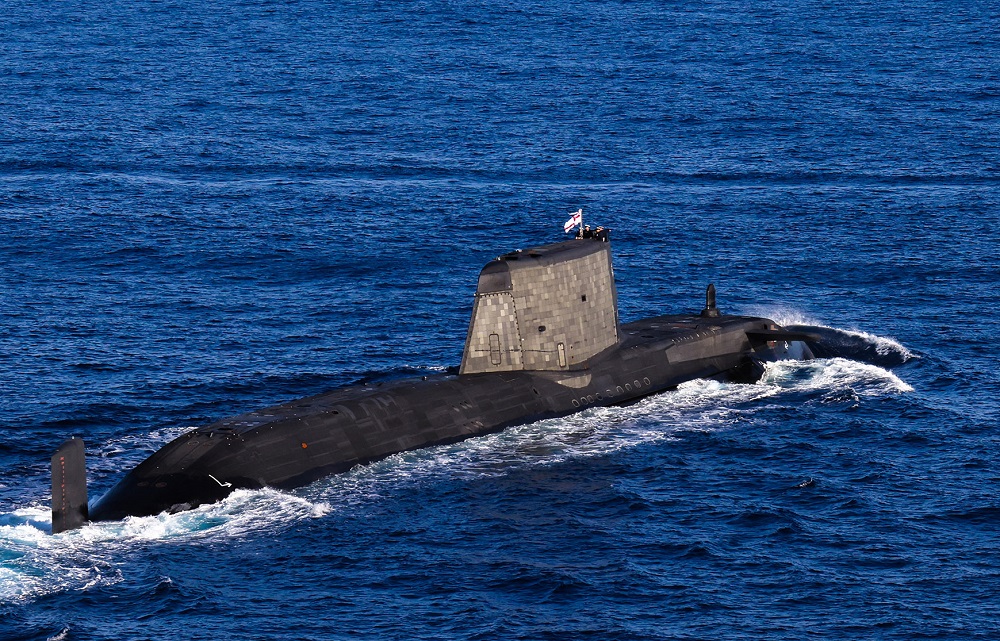
Since the AUKUS announcement was made in September last year, a huge amount of ink has been spilled discussing the capabilities of
nuclear-powered submarines, the
merits of the potential designs, and the challenges of ensuring the vessels are delivered within the
necessary timeframe. Far less attention has been paid to the potential impacts that the decision to adopt nuclear submarines will have on the Royal Australian Navy itself. A glance back at the experience of the Royal Navy during its formative period adopting nuclear submarines suggests that a massive technological acquisition project such as this will have a transformative impact on the RAN, and in ways that extend far beyond simply gaining a new capability.
In 1962, First Sea Lord Caspar John bemoaned in his diary that the British Polaris project threatened to be a millstone
‘hung round our necks’ and that they were ‘potential wreckers of the real navy’. While it may be questioned whether or not Admiral John’s fears proved well founded, it is indisputable that the decision of the British government to pursue nuclear submarines and a continuous at-sea nuclear deterrent, or CASD, came at a considerable opportunity cost for the Royal Navy. The government’s assurances that the CASD would not impinge on wider Royal Navy funding naturally slipped, and where the money would come from soon became the topic of bitter interservice fighting. By the early 1980s senior naval leaders were describing the CASD as the
‘cuckoo in the nest’ because of the way the costly programs were funded at the expense of traditional surface-fleet capabilities.
Similar assurances to
‘do what it takes’ and provide full funding support were made by the Morrison government when announcing the nuclear submarines would be acquired under AUKUS. However, with the program not set to deliver the first boat for nearly 20 years, the likelihood of this ‘blank cheque’ remaining through successive changes of government seems slim. As in the Cold War Royal Navy, future RAN leaders may well have to make difficult decisions about which other capabilities to cut to continue to fund the nuclear submarine project. The current relatively benign financial situation has also served to limit opposition to this extraordinarily costly project from the other services. If we see tighter defence budgets this is almost certain to change, further driving pressure on the navy to make cuts elsewhere.
Money is perhaps the most tangible of the potential opportunity costs of the AUKUS project, but it is far from the only one. Massive technological acquisitions are extremely intensive in their use of human capital, something that Vice Admiral Jonathan Mead has recently highlighted. The Nuclear-Powered Submarine Taskforce he heads has already spawned at least seven divisions and
nine high-level trilateral working groups and
numbers more than 200 people. To support this, it has pulled in talent from across the navy, Defence and wider government. This concentration of personnel is essential to get a project as complex as this one off the ground, but in what are relatively small organisations, such efforts come at the cost of diverting people from other areas.
The demands of nuclear programs on human resources in the early Cold War demonstrate the potential impact. The US Navy Special Projects Office
‘stripped the Navy of its best technical talent’, and routinely ‘decimated’ teams working on other high-end projects. The Polaris program was delivered, but it arguably came at the cost of a number of other key conventional capabilities including surface-to-air missiles. Given the small talent pool in Australia, the risk of similar problems occurring with the submarine taskforce is extremely high.
The AUKUS submarine project comes with an additional layer of complexity in the form of the
regulatory and
legislative changes necessary to allow Australia to safely and legally acquire, build and run nuclear submarines. Although much of this might lie outside the direct purview of the navy, it is still going to be a huge endeavour that will take up a considerable chunk of Defence’s ‘bandwidth’, with resultant impacts elsewhere.
Finally, and perhaps most importantly, the decision to adopt nuclear submarines is likely to significantly and permanently alter the culture and identity of the RAN. The construction of the first nuclear submarines and the subsequent development of Polaris was a huge undertaking for both the USN and the RN, and these projects changed the nature of those organisations. Admiral Hyman Rickover’s influence on the US Navy is well known, but in Britain as well, many of the officers associated with these projects went on to significant leadership positions. The exciting nature of the technology served as a draw for talented young officers, and the prominence afforded to submarines by the Cold War ensured that the identities of both the USN and the RN were rapidly reshaped, with submarines at their heart and, increasingly, submariners at the helm.
Since HMAS
Melbourne was decommissioned in 1982, the RAN has primarily been a surface navy, with the route to the top running through command of one of the service’s surface combatants. Between 1982 and 2008,
seven of the eight officers who served as chief of the naval staff or chief of navy had commanded a guided missile destroyer, a pattern that has broadly continued with other surface combatants.
Although it is going to be a very long time before one of the commanders of an AUKUS submarine goes on to lead the RAN, the program seems certain to reshape the service long before then. The relative weight and significance of the project, and its role as a magnet for talented officers, will ensure that it will shape the careers of many of the service’s future leaders. The primacy of the surface navy seems likely to be challenged, and with it the very identity of the RAN.
 Print This Post
Print This Post